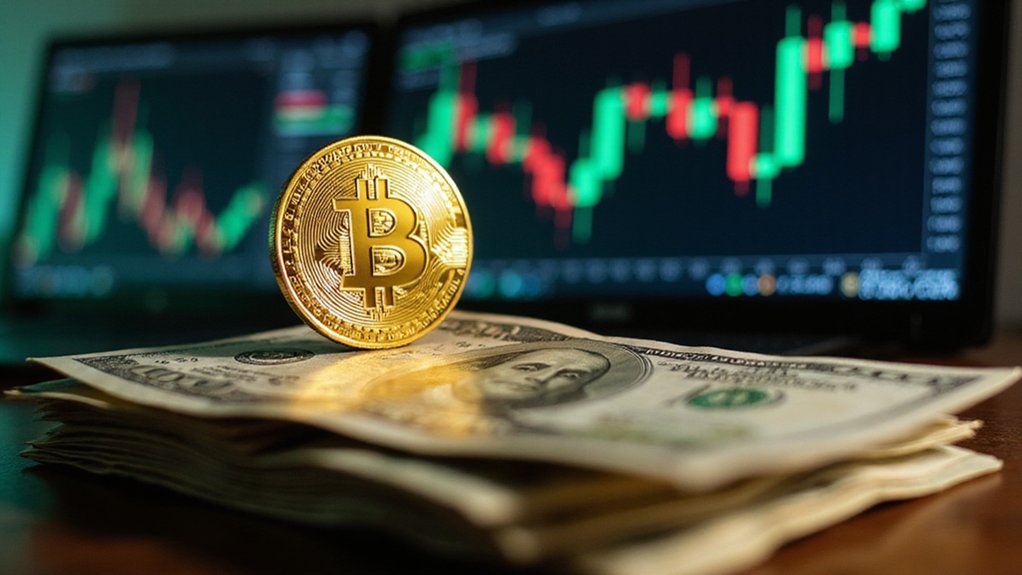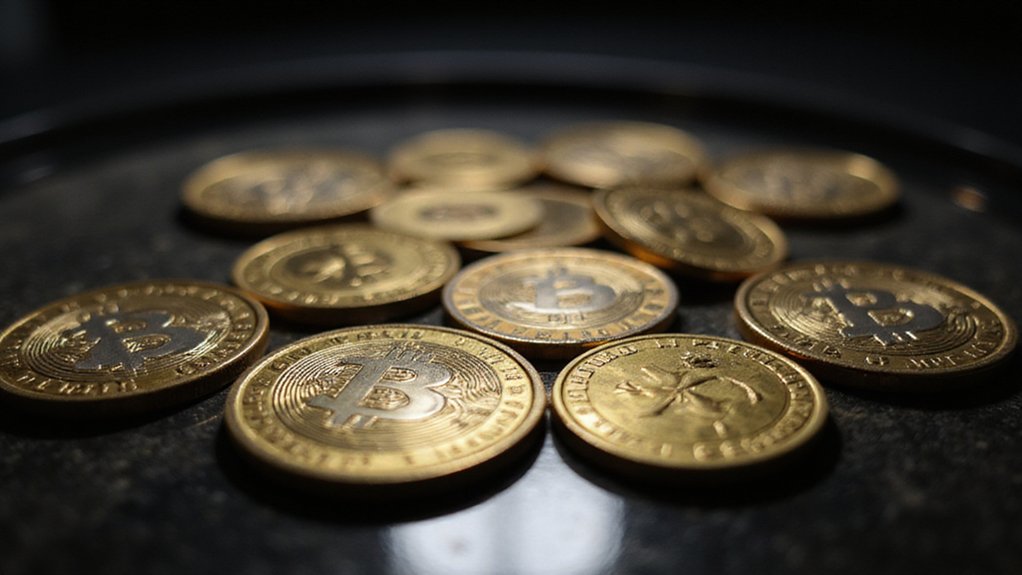Gas prices in cryptocurrency transactions are fees that transform computational effort into monetary cost, compensating validators who maintain network integrity on decentralized blockchains. Measured in native tokens like ETH and denominated in gwei, these fees follow the formula (Base fee + Priority fee) × Gas limit, creating an economic mechanism that prevents spam while occasionally perplexing users when network congestion drives costs higher than the transaction value itself—a delightful irony that reveals deeper complexities beneath this deceptively simple arithmetic.

The peculiar alchemy of blockchain economics transforms computational effort into monetary cost through gas prices—those ubiquitous fees that simultaneously power decentralized networks and perplex newcomers who discover that sending $10 worth of cryptocurrency might cost $50 in transaction fees during peak congestion.
These fees represent compensation for validators who maintain network integrity, measured in native tokens like ETH and denominated in gwei (where one gwei equals 0.000000001 ETH, because apparently nine decimal places weren’t quite enough precision for the digital age).
The mathematics behind gas pricing follows a deceptively straightforward formula: (Base fee + Priority fee) × Gas limit equals total transaction cost.
The deceptively simple arithmetic of blockchain economics masks a labyrinthine system where computational effort translates directly into monetary pain.
The base fee, automatically adjusted by protocol algorithms, responds to network demand with the mechanical precision of supply-and-demand economics, while the priority fee functions as a digital gratuity—pay more, jump the queue.
A typical transaction requiring 30,000 gas units at 75 gwei base fee plus 5 gwei priority fee costs 2,400,000 gwei, or roughly 0.0024 ETH.
Network congestion drives this pricing dynamic with ruthless efficiency.
Simple transfers consume modest computational resources, but smart contracts—those autonomous digital agreements—demand substantially more processing power, inflating costs accordingly. These smart contract interactions represent some of the most complex operations users can perform on blockchain networks like Ethereum. These self-executing programs automatically trigger when predetermined conditions are satisfied, eliminating traditional intermediaries from the transaction process.
Users retain control over this economic dance, setting their own gas limits (the computational ceiling they’re willing to fund) and priority fees based on urgency versus frugality calculations.
The EIP-1559 protocol update introduced base fee burning, literally destroying portions of transaction fees to manage token supply—a deflationary mechanism that would make traditional economists either fascinated or apoplectic. Following the 2022 proof-of-stake transition, a portion of these burned fees now rewards ETH stakers who secure the network through their holdings.
This update created more predictable fee structures while maintaining the network’s spam-resistance properties, since flooding the blockchain with meaningless transactions becomes prohibitively expensive.
Practical navigation of this system requires monitoring gas prices through blockchain explorers, avoiding peak usage periods when possible, and accepting the fundamental trade-off between transaction speed and cost.
The irony persists: decentralized networks designed to eliminate financial intermediaries have created their own economic complexities, where understanding computational pricing models becomes prerequisite for basic digital transactions.
Frequently Asked Questions
Can I Get a Refund if My Transaction Fails Due to Insufficient Gas?
No refund materializes when transactions fail due to insufficient gas—a peculiar quirk of blockchain economics. The network doesn’t actually charge fees for failed transactions, rendering the refund question somewhat moot.
However, users still forfeit opportunity costs and time spent waiting for inevitable failure.
Smart wallets like MetaMask now provide gas estimation tools, helping users avoid this digital purgatory where transactions languish in limbo before expiring without execution or monetary penalty.
Do All Cryptocurrencies Use Gas Fees or Only Specific Blockchains?
Not all cryptocurrencies employ gas fees—only specific blockchains utilize this execution model.
Ethereum pioneered gas-based pricing for computational work, while alternatives like Nano offer feeless transactions through block-lattice architecture.
Stellar, Ripple, and Solana charge minimal fixed fees (often under $0.01) rather than variable gas costs.
Bitcoin uses transaction fees for block space, not computational steps.
Smart contract platforms generally require gas-like mechanisms, though terminology varies across networks.
What Happens to My Gas Fee When Network Congestion Suddenly Decreases?
When network congestion suddenly decreases, one’s gas fee drops correspondingly—sometimes dramatically.
The auction-based mechanism that drives blockchain fees means fewer competing transactions translate directly into lower clearing prices.
Users who submitted transactions with higher fees during peak congestion effectively overpaid, though their transactions process faster.
Meanwhile, previously stalled low-fee transactions suddenly become viable as miners accept reduced premiums, creating an immediate cost advantage for strategic timing.
How Do Gas Prices Compare Between Weekdays and Weekends?
Weekend gas prices typically trade 30-50% lower than weekday rates, as crypto degenerates apparently observe something resembling normal sleep schedules.
Peak weekday fees occur during North American and European business hours (8 AM-1 PM EST), with Tuesdays and Thursends proving particularly expensive.
The sweet spot emerges between 2-3 AM EST on weekends, when even the most devoted DeFi farmers have presumably retired—though sudden network congestion¹ can obliterate these patterns instantly.
—
¹As previously discussed regarding sudden congestion changes.
Can I Cancel a Pending Transaction to Avoid Paying Gas Fees?
One can indeed cancel pending transactions on EVM blockchains by submitting a replacement transaction with identical nonce and higher gas fees—though this requires paying additional gas for the cancellation itself.
The irony, naturally, is that avoiding gas fees necessitates paying gas fees.
Success depends on outbidding the original transaction by at least 10% before miners confirm it, making this less about avoiding costs and more about damage control.









